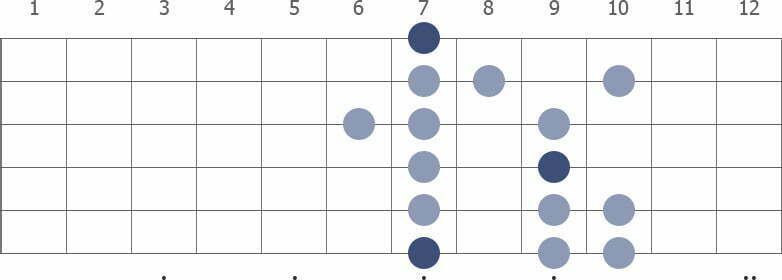Expanding your range as a guitarist can be achieved by learning the B minor scale. This scale is the relative minor of D major, which means that both scales share the same notes, but in a different order. It can be found in a diverse range of musical genres and styles.
Improving your ear training can be accomplished by studying minor scales. The third interval is the main difference between minor and major scales. In a minor scale, the third is a half-step lower or “flat” compared to the third in a major scale. This single note variation gives the minor scale its unique, sorrowful sound.
In this lesson, we will explore the notes in the B minor scale, how to play it, and how to practice playing it. It’s time to grab your guitar and let’s get started on this musical journey.
Contents
Notes in the B minor scale
The B minor scale consists of seven notes:
- B
- C#
- D
- E
- F#
- G
- A
The root note of the B minor scale is B. To form a B minor chord, you need to combine the root note B with the minor third D and the perfect fifth F#. This scale is made up of seven notes and can be played in various positions on the guitar fretboard.
In this lesson, we will learn how to play one version of the B minor scale and the finger placements required to play it on the guitar. Regardless of where you start playing on the fretboard, the B minor scale will always consist of these seven notes.
B Minor scale position
Diagrams can be useful in learning the B minor scale as they allow you to identify which notes correspond to each fret. These diagrams represent the guitar’s fretboard. In the diagrams below, each dot represents a note that you will play on a specific string and fret. If a dot appears above the string with a note, play the string in an open position. The dark dots indicate the root note of the scale, which is B in this case. It is crucial to follow the diagram precisely to play the scale correctly.

B Minor scale – 7th position
To play the B minor scale in the 7th position, start by placing your index finger on the 7th fret of the low E string. Your middle finger will be used to play notes on the 8th fret, your ring finger for notes on the 9th, and your pinky for notes on the 10th fret.
However, when you arrive at the G string, you will need to move your hand up one fret to reach the 6th fret with your index finger to play the C# note. After playing the C# note, slide your index finger back down to the 7th fret of your G string to play the D note.
B Minor scale tab
After learning how to play the B minor scale in the 7th position using a diagram, we will now examine the same scale using guitar tabs. Guitar tabs provide the same information as diagrams, but they also indicate the precise order in which to play each note.
As you progress in your guitar studies, you may prefer to use diagrams over tabs, or vice versa. Although most guitarists have a preference, it is important to learn both. Tabs and diagrams are commonly used in guitar music, and knowing both will ensure that you are not limited by notation as you continue to learn.
Now, let’s examine the guitar tab for the B minor scale version we just studied.
B minor scale tabs – 7th position
To play the B minor scale in the 7th position, start with your index finger on the 7th fret of the E string. Remember to shift your hand position down one fret when you reach the G string so that you can use your index finger to reach the sixth fret.
B Minor scale exercise
After learning the fundamentals of playing the B minor scale, the next step is to practice regularly. When starting out, take your time to ensure that you are correctly placing your fingers on each note. As you become more familiar with the scale and develop finger strength, you can gradually increase your playing speed. Using a metronome to play in time is an effective way to train yourself at this stage.
To improve your guitar playing skills, try playing the B minor scale both ascending and descending. Pay attention to the pitch differences as you play the same scale on different parts of the fretboard.
Once you can play the scale with ease, focus on your picking hand. Scale practice is an excellent time to practice alternate picking. Consistent practice of scales will enhance your dexterity and strength, and also train your ears. Don’t forget to use our Guitar tunio to practice accurately. This powerful app is available on the App Store and Play Store, check it out.
